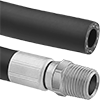Filter by
Manufacturer Model Number
Electrical Connection
Manufacturer Series
Development Board Type
Microcontroller Model Number
Sold As
Connects To
Operating Voltage
Memory Size
Input Voltage
Mounting Location
Actuator Style
DFARS Specialty Metals
Electrical
Fabricating and Machining
Communication
Fluid Handling
Measuring and Inspecting
Lighting












































































